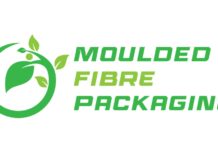It has been since many years that the concept when it comes to automation has gone on to push many into a panic. Though such automated technologies happen to have enormous potential, some are indeed worried that way too much reliance when it comes to automation could go on to have pretty nasty effects on the economy as well as the workforce.
Most experts, although, go on to stress that automated techs are not necessarily meant in order to replace human involvement. Rather, they happen to be created to supplement what one already has while at the same time ensuring to eliminate redundancies as well as preventable errors. The fact is that one still goes on to need real people so as to complete numerous jobs as well as to run and check such automation tasks. Automation simply goes ahead and creates efficiencies where they never would have existed before. And the fact of the matter is that in many cases, automation can go on to build a pretty safe experience.
This happens to be specifically true when it comes to the pharmaceutical sector. In spite of all sorts of stringent regulations that go on to surround the various kinds of pharmaceutical labels as well as the pharmaceutical packaging that exists, errors when it comes to medication can still occur. If and when they crop-up, pharmaceutical companies go on to face the risk of fines, fees, recalls, as well as reputational damage. As such, it is indeed crucial in order to prevent such sorts of mistakes before they get a chance to affect the general public. And, as many businesses functioning within the pharmaceutical industry have already gone on to find, the solution when it comes to compliance, safety, as well as efficiency happens to lie in automation.
Let us look into some of the issues that can go on to lead to pharmaceutical mislabelling, as well as the subsequent hazards such as recalls along with public safety risks. Let us look at the rising dependence on automation and how these technologies can significantly reduce or even eliminate risks.
Mislabeling pharmaceuticals can go on to lead to disaster
In theory, one knows that accurate pharmaceutical labeling happens to be very important. However, the reality is that mislabeled pharmaceutical products can go on to have major consequences, both when it comes to public safety and how the brand gets perceived.
A report published which happens to be published by the Institute of Medicine found that pharmaceutical packaging as well as labeling were the cause of 33% of all medication errors, along with 30% of fatalities that stemmed from medication issues in 2006. Although that report happens to be from many years ago, it goes on to illustrate the essential nature when it comes to preventing medication errors right from the start. And that comes down to what happens to be included on the packaging and the kinds of pharmaceutical labels one makes use of for the products.
When an error gets included within the pharmaceutical packaging or labeling, it can go on to have dire side effects. There is no denying the fact that one of the most crucial consequences that can go on to occur happens to be compromising user safety. Patients have to trust that the medications they are taking are going to be administered in the right way and that these labels reflect complete accuracy. When unique kinds of pharmaceutical labels go on to have even small errors, there is always a likelihood that the product can or will be misused. This can go on to result in unwanted symptoms or even medication interactions for the patient, and in more serious cases, it could even lead to hospitalization or even death.
Besides the tragic loss of life, this kind of scenario goes on to present a huge issue for pharmaceutical companies. It is indeed true that all drugs happen to have possible side effects, but when these side effects are in a way unintentional or the consumer is not warned about them, this can raise issues associated with the trust of the brand. A single adverse event that is concerned with a labeling or packaging challenge in medication can go on to do major and permanent harm to any brand. This is specifically true in the event that a product recall is made public.
It is well to be noted that recalls come with certain pitfalls. Recalls result in major financial costs, which can very well be a huge burden for a pharmaceutical company to take on, specifically if the product was released on a wider scale. There is also a possibility of incurring financial repercussions because of time and resources lost due to the recall and also during the rectification process. And if the FDA or certain other regulatory agency goes on to learn that the packaging or types of pharmaceutical labels that are used are not in compliance with the pertinent regulations, one might as well go on to experience further damage when it comes to reputation and also the business as a whole. Even if one does not voluntarily recall the product themselves, regulatory agencies such as the FDA might as well do it. That can make it a tad harder to obtain approval in the future.
When the stakes happen to be high, it makes a lot of sense that those within the pharmaceutical industry would go on to take every possible preventative measure. Ultimately, taking automation into consideration can be a step towards safeguarding the public while also maintaining product quality, overall productivity, as well as compliance.
Automation eradicates the possibility of recalls and consumer risks
The potential in terms of mislabeling a specific pharmaceutical product happens to be comparatively higher when you depend completely on humans so as to spot their mistakes. Even if one goes on to consider themselves to be detail-oriented, it is indeed entirely possible for issues both large as well as small to slip by. When in case of writing a school paper or even drafting an email, those errors might not go on to matter that much, but because of pharmaceutical packaging and labeling, they can quickly go on to become a literal life-and-death case.
That is the reason why so many businesses functioning within the pharmaceutical industry have gone on to switch to automation. It is well to be noted that, as per PharmaceuticalProcessingWorld.com, a probable 50% of all pharmaceutical recalls come down to challenges in terms of labeling or packaging artwork. Even the tiniest details, such as missing data, content errors, malfunctioning barcodes, or even misconstrued meanings, can go on to result in delays, safety risks, and potential product recalls.
In order to avoid these types of problems, careful inspection is indeed the need of the hour throughout every step of production. However, with only human workers performing such tasks, issues can still slip through. And even if they do not, it takes far more time as well as effort for people to do inspections with their eyes.
COVID-19 has furthered the requirement for automation
The pandemic has gone on to illustrate how important technology is to how one functions. Automation, especially, has become a very attractive option for businesses that are looking to keep costs low as well as productivity high. Operational flexibility as well as resilience are the keys to survival across the health crisis, and automation has become much more popular as a result of this time.
It is quite apparent that consumers happen to be paying even closer attention to pharma products right now. While there would be some concerns could be misplaced, especially with regards to vaccines, it is indeed pretty hard to argue against offering even greater transparency by way of improved packaging as well as new types of pharmaceutical labels. There is already an obligation to keep the public safe and there is also an opportunity to communicate more clearly to consumers by means of an error-free packaging and labeling.
The fact is that if someone has not yet employed the use of automation in packaging or labeling, now may well be the time to consider making that change.




























